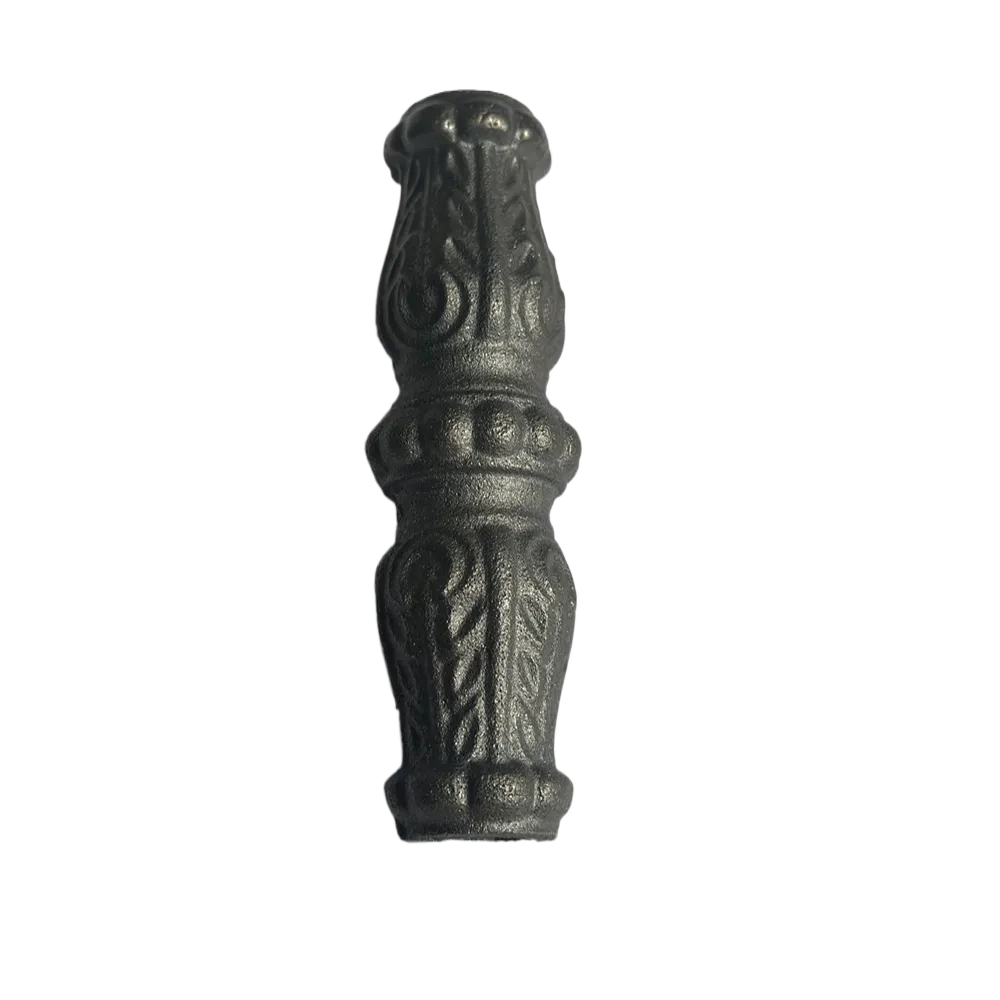carbon content of wrought iron
Carbon Content of Wrought Iron Understanding Its Composition and Significance
Wrought iron, a material synonymous with tradition and craftsmanship, has played a pivotal role in various structural and ornamental applications throughout history. Its unique physical properties, including malleability, ductility, and resistance to corrosion, are largely influenced by its carbon content. Understanding the composition of wrought iron and the implications of its carbon content is crucial for both historical analysis and modern engineering practices.
Definition and Composition
Wrought iron is commonly defined as a type of iron alloy containing a very low carbon content, typically less than 0.08% by weight. This is in stark contrast to cast iron, which generally has a carbon content ranging from 2% to 4%. The low carbon content of wrought iron contributes to its distinct properties, enabling it to be easily forged, welded, and shaped under heat without breaking or cracking—a quality that has endowed it with timeless appeal in the construction of buildings, bridges, gates, and artistic structures.
In addition to iron and carbon, wrought iron often contains trace amounts of other elements, such as sulfur, phosphorus, and slag inclusions. These impurities can affect its mechanical properties and overall performance. The slag, a by-product of iron smelting, tends to remain in the material, providing wrought iron with additional strength and flexibility. Unlike modern steels, which may contain higher carbon levels and specific alloying elements, wrought iron's composition reflects ancient techniques and practices that have largely been eclipsed by industrial advancements.
Impacts of Carbon Content
The carbon content in wrought iron is pivotal for its behavior and characteristics. Low levels of carbon contribute to its softness and malleability, features that are essential for wrought iron's applications in decorative ironwork and structural components. The ability to shape wrought iron easily without fracturing means that artisans and blacksmiths can create intricate designs that enhance both functional and aesthetic value.
In contrast, increased carbon levels would lead to a harder and more brittle material. This characteristic is seen in cast irons, which, while useful in certain applications, cannot undergo the same level of manipulation as wrought iron. Therefore, maintaining a low carbon content is crucial for preserving the desired qualities associated with wrought iron.
Furthermore, the low carbon content enhances wrought iron's resistance to rust and corrosion when compared to plain carbon steels
. This durability makes wrought iron an ideal material for outdoor structures and components exposed to the elements, ensuring longevity and reducing maintenance needs.carbon content of wrought iron

Historical Context and Technological Development
Historically, wrought iron has been integral to various cultures; its production and use date back to ancient civilizations. The material's characteristics made it a preferred choice in the construction of tools, weapons, and architectural elements. Over centuries, the techniques for producing wrought iron were refined, and the material became synonymous with skillful craftsmanship.
With the advent of the Industrial Revolution, wrought iron began to see competition from mild steel and other alloys with higher carbon content. These materials offered improved strength and easier mass production, leading to a decline in wrought iron's popularity. However, interest in wrought iron saw a revival in the late 19th and early 20th centuries, particularly in the realm of architectural design, where its unique aesthetic qualities were celebrated.
Modern Applications and Revival
Today, wrought iron is still utilized in various applications, particularly where craftsmanship and design are paramount. Its use in decorative railings, gates, and fencing can be observed in vintage and contemporary architecture alike. Additionally, wrought iron remains a popular choice for artisans for creating bespoke furniture and art pieces.
Recent trends toward sustainability and the appreciation for handcrafted materials have further fueled a resurgence in wrought iron's popularity. As architects and designers seek to incorporate materials with historical significance and enduring qualities, wrought iron has found its place in modern constructions, blending past techniques with current design philosophies.
Conclusion
The carbon content of wrought iron is a fundamental aspect that defines its unique properties and historical significance. With less than 0.08% carbon, wrought iron retains a malleable and durable nature that lends itself to a variety of applications. The material’s legacy continues to thrive, emphasizing the importance of understanding its composition to fully appreciate its role in both the past and present of architectural and artistic endeavors. Understanding wrought iron allows us to value not just its physical attributes but also the craftsmanship and traditions that shape our built environment.
-
Wrought Iron Components: Timeless Elegance and Structural StrengthNewsJul.28,2025
-
Window Hardware Essentials: Rollers, Handles, and Locking SolutionsNewsJul.28,2025
-
Small Agricultural Processing Machines: Corn Threshers, Cassava Chippers, Grain Peelers & Chaff CuttersNewsJul.28,2025
-
Sliding Rollers: Smooth, Silent, and Built to LastNewsJul.28,2025
-
Cast Iron Stoves: Timeless Heating with Modern EfficiencyNewsJul.28,2025
-
Cast Iron Pipe and Fitting: Durable, Fire-Resistant Solutions for Plumbing and DrainageNewsJul.28,2025
-
 Wrought Iron Components: Timeless Elegance and Structural StrengthJul-28-2025Wrought Iron Components: Timeless Elegance and Structural Strength
Wrought Iron Components: Timeless Elegance and Structural StrengthJul-28-2025Wrought Iron Components: Timeless Elegance and Structural Strength -
 Window Hardware Essentials: Rollers, Handles, and Locking SolutionsJul-28-2025Window Hardware Essentials: Rollers, Handles, and Locking Solutions
Window Hardware Essentials: Rollers, Handles, and Locking SolutionsJul-28-2025Window Hardware Essentials: Rollers, Handles, and Locking Solutions -
 Small Agricultural Processing Machines: Corn Threshers, Cassava Chippers, Grain Peelers & Chaff CuttersJul-28-2025Small Agricultural Processing Machines: Corn Threshers, Cassava Chippers, Grain Peelers & Chaff Cutters
Small Agricultural Processing Machines: Corn Threshers, Cassava Chippers, Grain Peelers & Chaff CuttersJul-28-2025Small Agricultural Processing Machines: Corn Threshers, Cassava Chippers, Grain Peelers & Chaff Cutters












